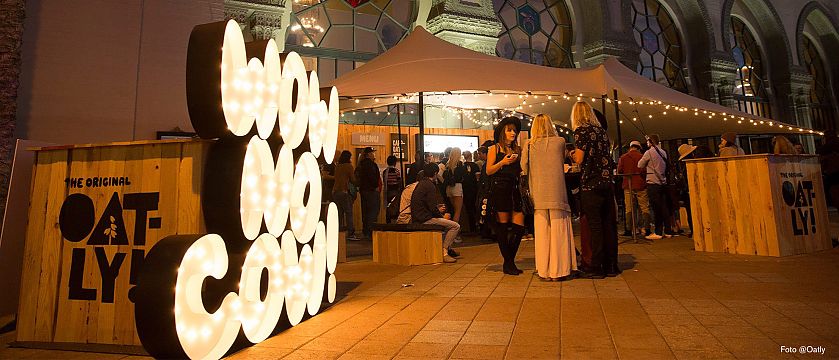Glossary
Generic Brand
Generic Brand
Generic Brand

There is not just one but two definitions for the term "generic brand" – and the two have nothing to do with one another.
1. The brand name stands for a whole product segment: In this definition, the generic brand is a brand whose awareness and attractiveness are so great that it displaces the actual product name from common parlance. For instance, most people ask for a "Kleenex" rather than asking for a tissue. And they "google" something when they use an online search engine.
Products that enjoy this special status are often those who were pioneers when they entered the market, occupied their position with the aid of a No.1 positioning, and got established quickly. Because competitors usually hit the market quickly with copies, it is important to keep on strengthening the brand and consistently live its No. 1 positioning, despite the high degree of awareness and attractiveness.
2. A "no-name brand" without its own strategy: A "generic brand" is also the opposite of a product brand, and is often called a "no-name product". These are mostly products of daily consumption that provide purely a product benefit without added value, are in the lower price segment, and are often sold by discounters. The competition is fierce and the products interchangeable.
That means: A generic brand of this type does not have an individual brand strategy. The only differentiating feature is often its price. Examples for typical generic brands in this sense are the "Ja" products sold by the REWE Group. In the pharmaceuticals sector, these generic brands are also called "generics".
Good Brands
Good Brands
Good Brands

According to the good business approach, companies and brands should in the future see themselves as integral parts of society and the world. Being part of that larger whole means that companies have to take responsibility, to help shape it. Their first priority cannot be profit, but a higher purpose to benefit the larger whole. Corporate social responsibility measures are demoted to minimum requirements.
How does taking on social and ecological responsibility benefit a company?

Pursuant to the 3-P model, good business creates a win-win-win situation for companies: Their socio-economic contribution benefits society (people as win 1), the world (planet as win 2), and the company itself earns an adequate profit (profit as win 3).
This new self-perception not only corresponds to customers' changed expectations of companies and brands, but also builds a framework for innovation, successful brand extension and new business models.
Compared to impact brands, a good brands does not necessarily have to claim to change the world, but sees itself as part of the larger whole. In light of this self-concept it wants to make a positive contribution with its business activities.
Great Resignation
Great Resignation
Great Resignation

The "Great Resignation" is a phenomenon in the world of work that began during the coronavirus pandemic in spring 2021: People no longer want to work in the same way they did before the pandemic - and are withdrawing.
What impact did the Great Resignation have?
The Great Resignation led to a wave of layoffs that continues to challenge and change the labor market in many ways.
It accelerated the ongoing transformation from an employer to an employee market and further intensified the "war for talent".
How did the Great Resignation come about?
The causes of the Great Resignation and thus the increase in the number of resignations lie primarily in the exceptional situation during the pandemic: employees stayed at home (working from home or on short-time working) and were cut off from their working environment.
On the one hand, this led to loneliness and uncertainty, but on the other, people spent more time with their families and reorganized their leisure activities. A new rhythm of life emerged that caused people to fundamentally question their job and its meaningfulness. Some employees also used this phase to learn new skills: they improved their qualifications and expanded their career opportunities in order to enter a new industry.
Although this development was already apparent before the pandemic, the great wave of retrenchment came during the coronavirus period.
How should employers respond to the Great Resignation?
Companies are now faced with the challenge of having to meet the changing wishes of employees. The most frequently cited reason for resignation is a lack of emotional attachment to the company. This follows: Companies must take measures to strengthen employee loyalty.
This can be achieved through employer branding if it is optimized and used consistently. As soon as employees feel comfortable in the company, they stay longer - and also perform better.
Do you have any questions or suggestions about the glossary or would you like further information? We look forward to receiving your e-mail.
Greenhushing
Greenhushing
Greenhushing

Greenwashing is when brands conceal their sustainability goals and ambitions. The reason: they are afraid of not achieving the goals they have set and being accused of greenwashing as a result.
What exactly does greenhushing mean?
The term greenhushing means "green concealment". It has been around for several decades. However, it is currently gaining in importance because the topics of sustainability and greenwashing are attracting a lot of attention.
In addition, the EU has passed the "Greenclaim Directive" to curb greenwashing. The EU requires companies to prove so-called green claims - i.e. statements that suggest sustainability, such as "ecological" or "environmentally friendly" - using current scientific standards. Citizens must have direct access to information that explains the improvements.
The aim of this directive is absolutely right, it provides more orientation and clarity - but it also unsettles companies because they do not know what exactly they are allowed to communicate and how. That's why, when in doubt, some prefer not to communicate anything, even if they do a great job.
Why are companies greenwashing?
Around a quarter of all brands conceal their sustainability goals and ambitions: They avoid the topic of sustainability, refuse to comment or don't act at all. The reason for this is usually the fear that they will fail in this task and not achieve the required goal.
An even greater driver of this fear is being accused of greenwashing as a result. Whether rightly or wrongly, the consequences of such accusations can mean the end for a brand.
Some consumers may be of the opinion that financial success and sustainable business practices are contradictory. This is why particular caution is required in sustainability communication. It should make it clear: Economic success in particular is the stable basis for change and a real impact.
What helps against greenhushing?
This is what we recommend to companies to get out of the greenhushing trap:
- Develop a credible sustainability focus for your brands that you can maintain in the long term and use for communication.
- Design your sustainability strategy in such a way that it focuses on a specific, special topic - or a combination of several topics.
- Make sure that the topics are in line with the brand values and brand positioning.
Greenhushing damages the brand
When a brand disguises its commitment to sustainability, it hides its true identity and loses authenticity. It is crucial that it discloses its commitment and all background information: It is only through this transparency that it is credible and only then will it succeed in creating a long-term bond with customers - and ultimately success.
A company's commitment to sustainability is also relevant for the employer brand, and both employees and applicants are paying more attention to this. If they are not satisfied with this, they could respond with "climate quitting".
Sustainability communication: please be open, honest, step by step
The following also applies to sustainability efforts: top performance is the basis for success.We recommend communicating sustainable measures only after initial top performance has been achieved.It is better to publish smaller successes step by step in brand communication than big, unrealistic goals that may disappoint and annoy people.Brands should always be clear about the goal they are working towards in their sustainability efforts.They should always communicate transparently that the brand is on the way there.
Brands should report on this when it comes to sustainability:
- What measures have already been successfully implemented?
- Why do the chosen measures suit the brand? How do they contribute to this?
- What challenges were there during development?
In order to protect themselves from accusations of greenwashing, brands should not hide anything, but rather keep their customers openly and honestly informed and take them on the journey with them, step by step.
This is only possible with the courage to be transparent, even when mistakes or failures occur.Instead of covering them up or hiding them, brands should deal with them openly.They should show what they have learned from mistakes and how they intend to avoid them in the future.
This is our conviction at BrandTrust: it is never right to conceal your performance in any situation.How and with what you inform your customers about this must, of course, match the brand. Companies should definitely communicate their efforts for more sustainability, because every industry needs role models. They inspire and ultimately change the markets.
Example Lego: Transparency includes openly admitting mistakes
Lego knows that as a plastic toy manufacturer, it is not easy to position itself credibly with sustainability issues. However, the brand is known for its strong customer focus and innovative spirit.For example, the brand worked with children around the world to develop a "building manual for a better world".Lego has also invested heavily in research into sustainable materials in recent years.
In some cases, the brand has been able to develop better alternatives, for example for packaging and additional accessories.However, it had to admit that the research into rPET plastic was in vain because it does not contribute to reducing carbon emissions.
This honesty contributes to Lego being the most valuable toy brand in the world.
Example Oatly: The oat drink brand runs a special website for criticism
The oat drink brand Oatly is committed to climate protection and fights for people to consume fewer animal products and more plant-based products instead. Because its opinions are very strong, it repeatedly encounters fierce resistance.
She has dedicated her own website to these hurdles: fckoatly.com. There, fans and enemies can find out everything there is to criticize about Oatly.
With this website, the company openly demonstrates that it hides nothing and regards mistakes made as valuable in order to bring about positive social change.
Find out more:
- Study: Impact Brands
Greenwashing
Greenwashing
Greenwashing

Greenwashing is a marketing strategy that a company uses to portray itself as ecologically responsible even though it is not – or at least not to the extent that it claims in its communications.
What does the term "greenwashing" mean?
The color green in "greenwashing" symbolizes nature and environmental protection, while "-washing" stands for whitewashing, especially with regard to the ecological and sustainable performance of a brand.
The aim of greenwashing is not only to conceal and distract from critical aspects: it also involves spreading untruths in order to improve the image. Greenwashing affects several areas, such as the brand image, the manufacturing process and transport.
The three characteristics of greenwashing: opacity, misleading, exaggeration
These indications could be greenwashing:
- Opacity: Brands that engage in greenwashing tend to communicate in a nebulous and incomprehensible manner. The statements - for example from corporate influencers - are unsubstantiated and difficult to verify. They offer considerable scope for interpretation and lack substantive content. In addition, there is a lack of concrete actions that would factually prove the claims.
- Misleading: Consumers are deceived by unclear terms such as "natural", "ecological", "environmentally friendly", "regional" and "green". These keywords are not subject to any legal restrictions and can be used freely. Nevertheless, consumers often associate them with sustainability. In the area of ??cosmetic products, terms such as "natural cosmetics" or "organic cosmetics" are not legally protected.
(In the food industry, however, the terms "organic" and "eco" are legally protected. They may only be used if the product actually comes from organic farming.)
Further examples of misleading information:
- Brands sell products as "certified as sustainable", but the seals are made up. The goods could even harm the environment and people.
- So-called "beacon products": With these, brands stage their supposed sustainability, while their core business remains harmful to the environment. Green imagery is often used to create the impression that the brand as a whole acts sustainably. - Exaggeration: Some companies praise themselves for things that have long been required by law. They suggest an above-average commitment to greater sustainability, even though they are only fulfilling the legal requirements.
The EU is taking action against greenwashing
The EU Parliament has passed a Europe-wide law - the "Green Claims Directive". The main aim of this directive is to combat greenwashing and reduce confusion among consumers: they often do not know which of the numerous seals are actually credible and which are not. The directive requires brands to prove that their products are environmentally or climate-friendly. Only then are they allowed to use a corresponding label. Failure to comply can result in fines.
What does greenwashing mean for brand success?
Greenwashing poses significant risks to a brand's success. When consumers realize that a brand is cheating through greenwashing, this leads to a massive loss of trust. Especially on social media, this can quickly lead to a boycott of the brand and cause long-term damage.
The opposite phenomenon is not a solution: greenhushing - when brands keep quiet about their sustainability activities for fear of greenwashing accusations.
This is the only solution: brands must clearly and confidently fulfill their commitment to sustainability. They should anchor sustainability as an integral part of a long-term strategy with a clear focus. This is the basis for communication that is credible.
Similar to greenwashing is bluewashing: this is when a company overemphasizes or invents social activities.
Get in touch with us
Would you like to arrange a non-binding telephone call with us or do you have questions about our offer? Then simply fill out this form and we will get in touch with you as soon as possible.
